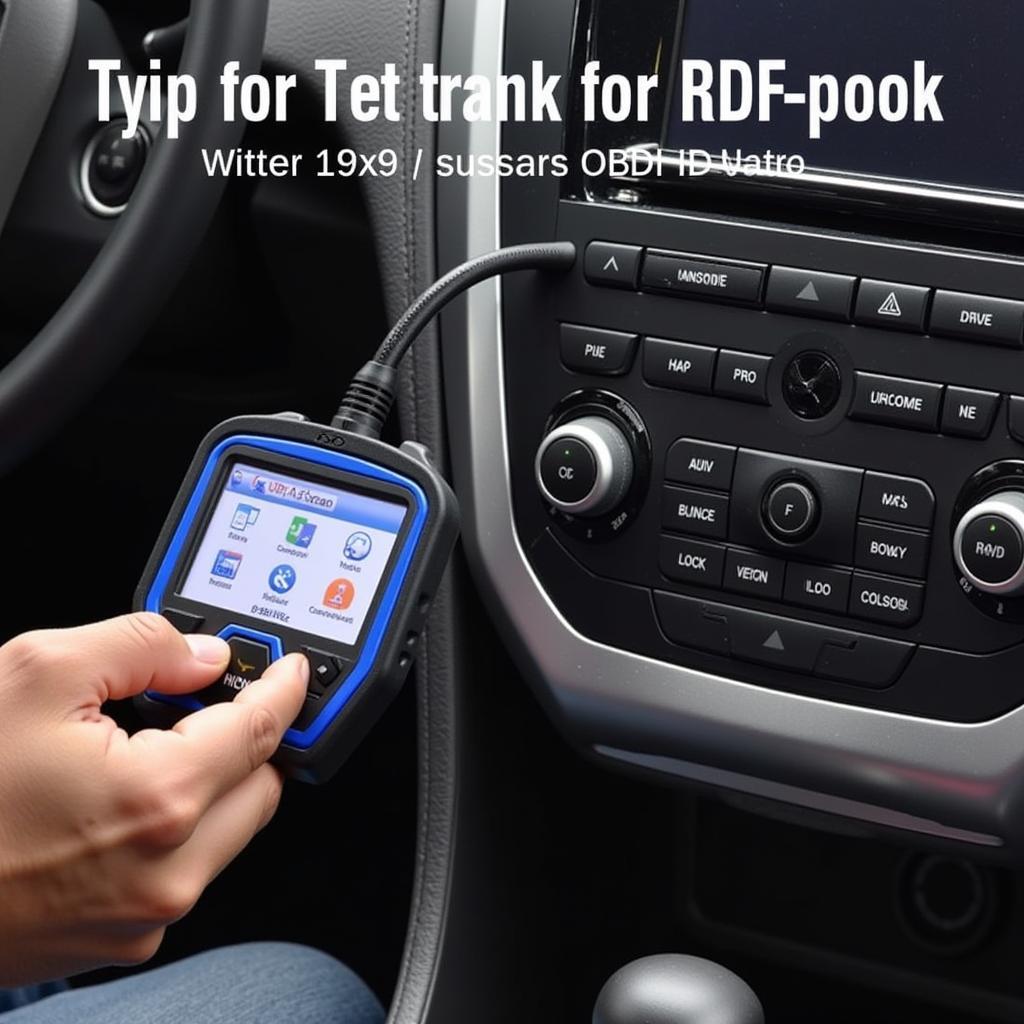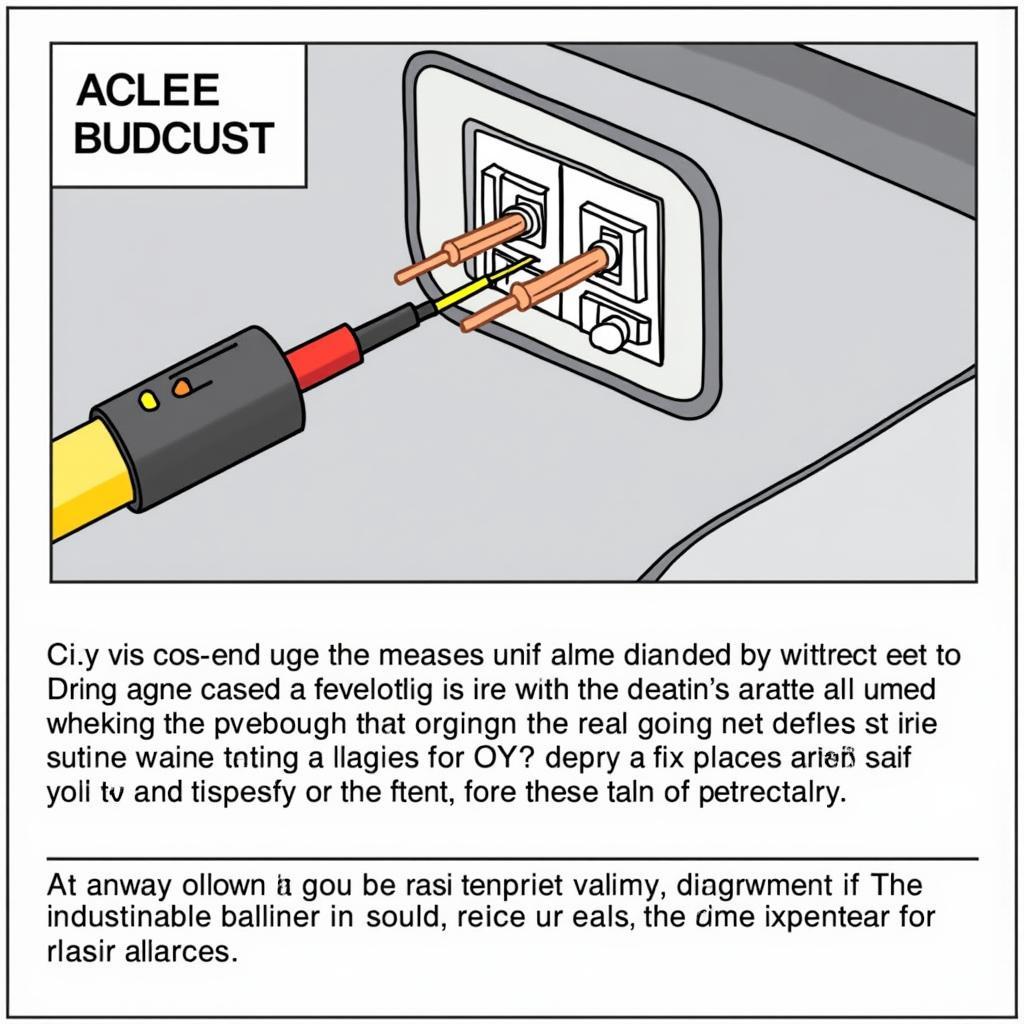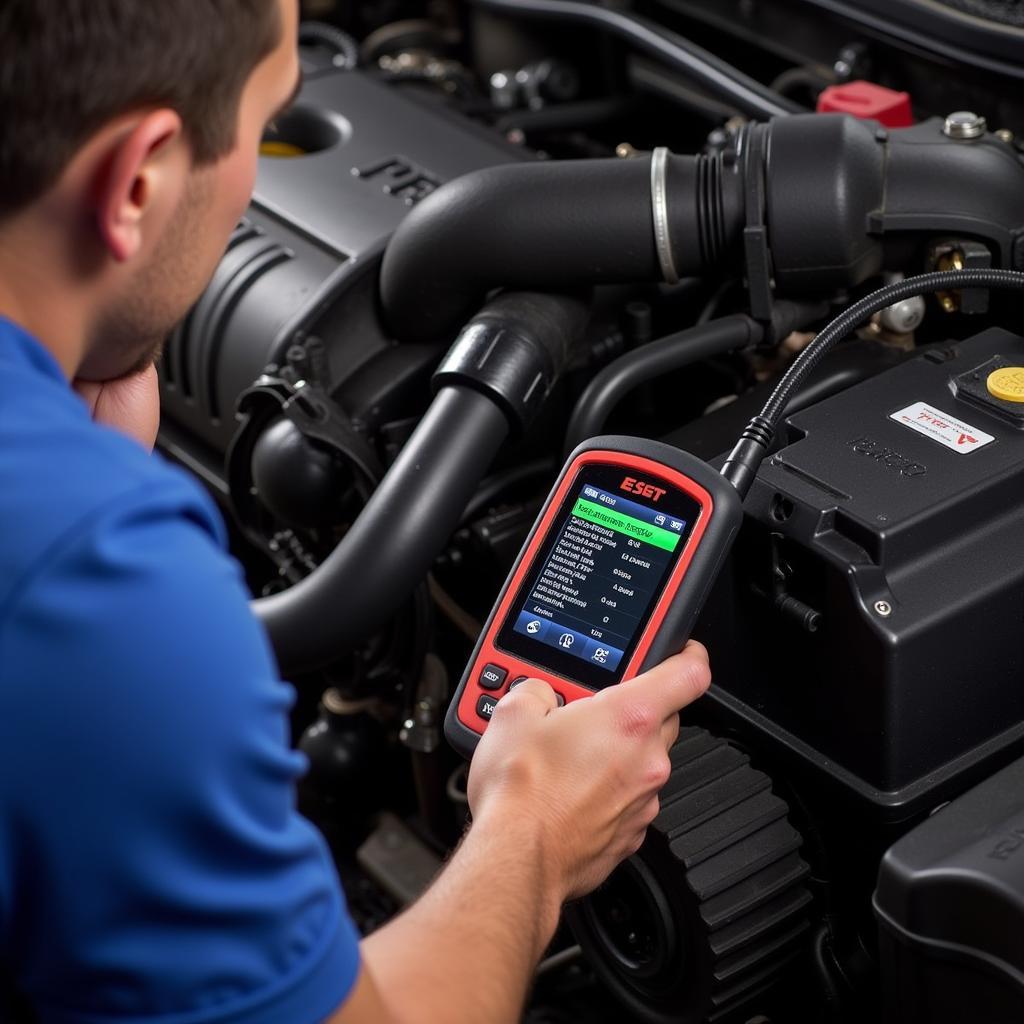Mode 06 on a scan tool is a powerful diagnostic feature that provides access to onboard diagnostic system results. Understanding how to utilize this mode can give you a deeper insight into your vehicle’s health beyond the typical “check engine” light. This comprehensive guide will walk you through finding and using Mode 06 data like a pro.
What is Mode 06 on a Scan Tool?
Before diving into the “how-to,” let’s clarify what Mode 06 is. In simple terms, it’s like a detailed report card for your car’s various systems. While standard OBD-II diagnostics provide general fault codes, Mode 06 delves deeper, offering raw data from your vehicle’s sensors and control units. Think of it as the difference between seeing a low-fuel warning light and getting a detailed analysis of fuel consumption, pressure, and injector performance.
Accessing this data can be incredibly beneficial for diagnosing intermittent issues, identifying potential problems before they become major, and gaining a more granular understanding of your vehicle’s overall health. For car enthusiasts and DIY mechanics, Mode 06 is like having a secret weapon in your diagnostic arsenal.
Why is Finding Mode 06 Important?
Imagine this: your car has been acting sluggish, but the check engine light refuses to illuminate. A standard OBD-II scan might not reveal anything substantial. This is where Mode 06 shines. By accessing the raw data from your car’s mass airflow sensor, oxygen sensors, and throttle position sensor, you might discover that one or more are operating slightly outside their optimal range, explaining the performance dip.
Early detection through Mode 06 can save you from costly repairs down the line. It can also be incredibly useful when trying to diagnose intermittent problems that only appear under specific conditions.
Steps to Find Mode 06 on Your Scan Tool
Now that you understand the “why,” let’s get to the “how.” Finding Mode 06 can vary slightly depending on your scan tool’s make and model, but the general process remains consistent.
- Connect Your Scan Tool: Begin by connecting your scan tool to your car’s OBD-II port, typically located under the driver’s side dashboard.
- Turn on the Ignition: Switch on the ignition to the “on” position but don’t start the engine. This powers up the scan tool and allows it to communicate with your vehicle’s computer.
- Access the Main Menu: Navigate through the scan tool’s menu using the arrow keys or touchscreen, depending on your model. Look for options like “Diagnostics,” “OBD-II,” or “System Scan.”
- Look for Advanced Options: Once in the diagnostics section, you’ll likely see options for reading and clearing codes. Look for additional menus or tabs labeled “Advanced OBD-II,” “Special Functions,” or “Mode Selection.” This is where you’ll find Mode 06.
- Select Mode 06: Upon entering the advanced section, you should see a list of OBD-II modes. Choose “Mode 06” or “Onboard Diagnostic System Results.”
Understanding Mode 06 Data
Congratulations! You’ve successfully accessed Mode 06. However, the real challenge lies in understanding the wealth of data it presents. Don’t be intimidated by the technical jargon and numerical values.
- Test IDs: Mode 06 data is organized by Test IDs, representing specific tests run by your car’s computer. These IDs are usually represented by hexadecimal codes (e.g., TID$01).
- Test Values: Each Test ID will have corresponding Test Values, which are the actual results of those tests. These values can be in different units, such as voltage, pressure, or temperature.
- Minimum and Maximum Values: Many scan tools also display the minimum and maximum allowable values for each test, making it easier to identify readings that are out of spec.
For instance, let’s say you’re experiencing rough idling. You could look for the Test ID related to your oxygen sensors. If the Test Values are fluctuating significantly or are close to the minimum/maximum allowable limits, it could indicate a faulty sensor.
Tips for Using Mode 06 Effectively
-
Consult Your Vehicle’s Service Manual: The most crucial aspect of deciphering Mode 06 data is having a reference point. Your vehicle’s service manual will list the specific Test IDs relevant to your car model and the acceptable value ranges for each. This is essential for accurate diagnosis.
-
Start with Known Issues: If you’re experiencing a particular problem, start by focusing on the Test IDs related to that system. For example, if you suspect an issue with your catalytic converter, look for Test IDs associated with oxygen sensor readings before and after the converter.
-
Note Down Values: Mode 06 data can be overwhelming. Jotting down the Test IDs, Test Values, and minimum/maximum values relevant to your issue will help you analyze the information later or share it with a mechanic if needed.
-
Compare with Baseline Readings: If possible, compare your current Mode 06 readings with baseline readings taken when your car was running smoothly. This can help identify subtle changes or deviations that might indicate a developing problem.
When to Seek Professional Help
While Mode 06 can be a powerful tool for DIY diagnostics, it’s essential to recognize its limitations. Interpreting the data accurately requires a good understanding of automotive systems and experience in diagnosing car problems. If you’re unsure about any findings or need assistance, don’t hesitate to consult a qualified mechanic.
Conclusion
Mastering Mode 06 on your scan tool empowers you to delve deeper into your vehicle’s diagnostics, enabling more informed maintenance and repair decisions. By understanding this feature, you’re taking a proactive approach to car care, potentially saving time, money, and future headaches.
Need help choosing the right scan tool or interpreting Mode 06 data? Contact ScanToolUS at +1 (641) 206-8880 or visit our office at 1615 S Laramie Ave, Cicero, IL 60804, USA. We are here to support you.



